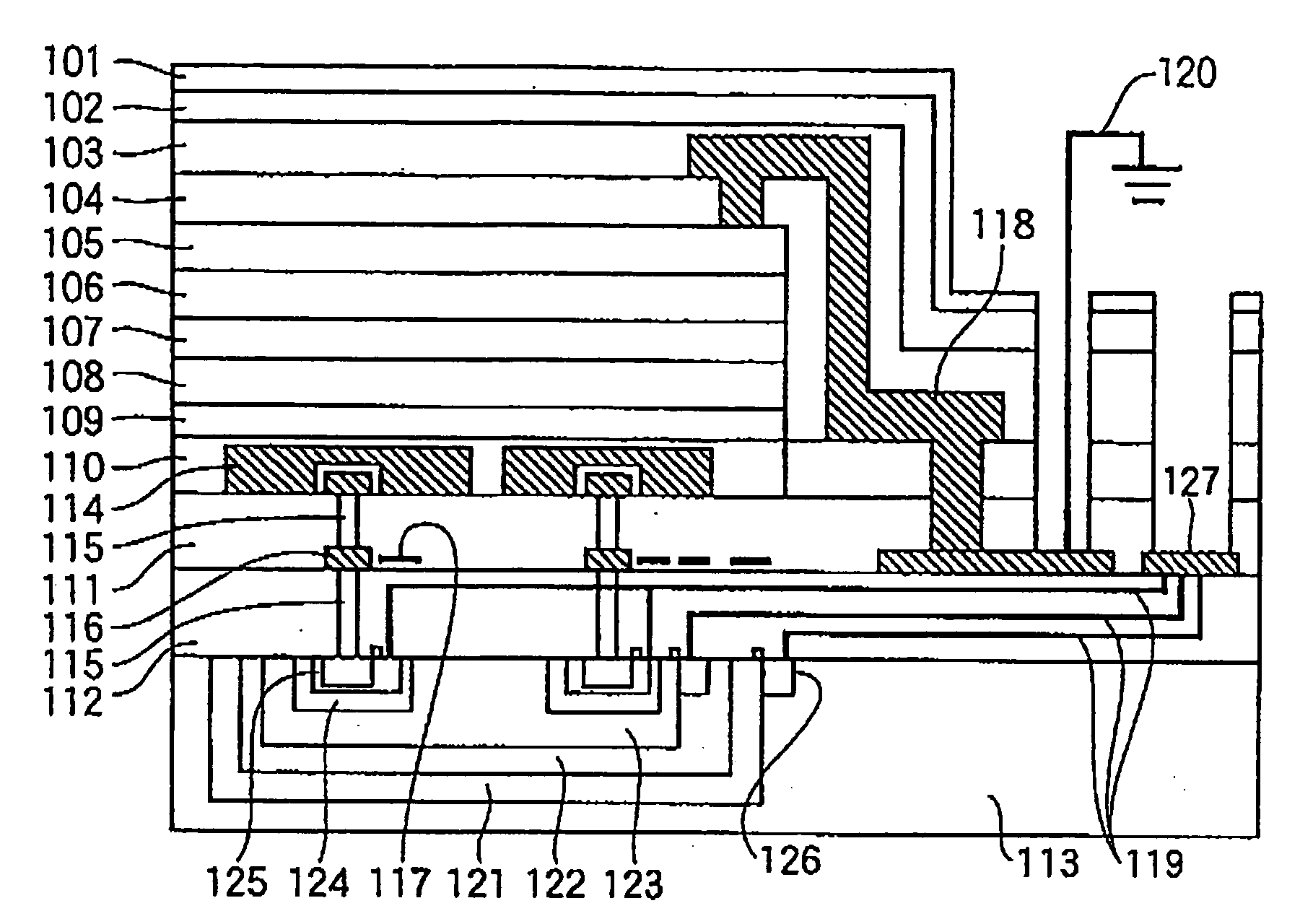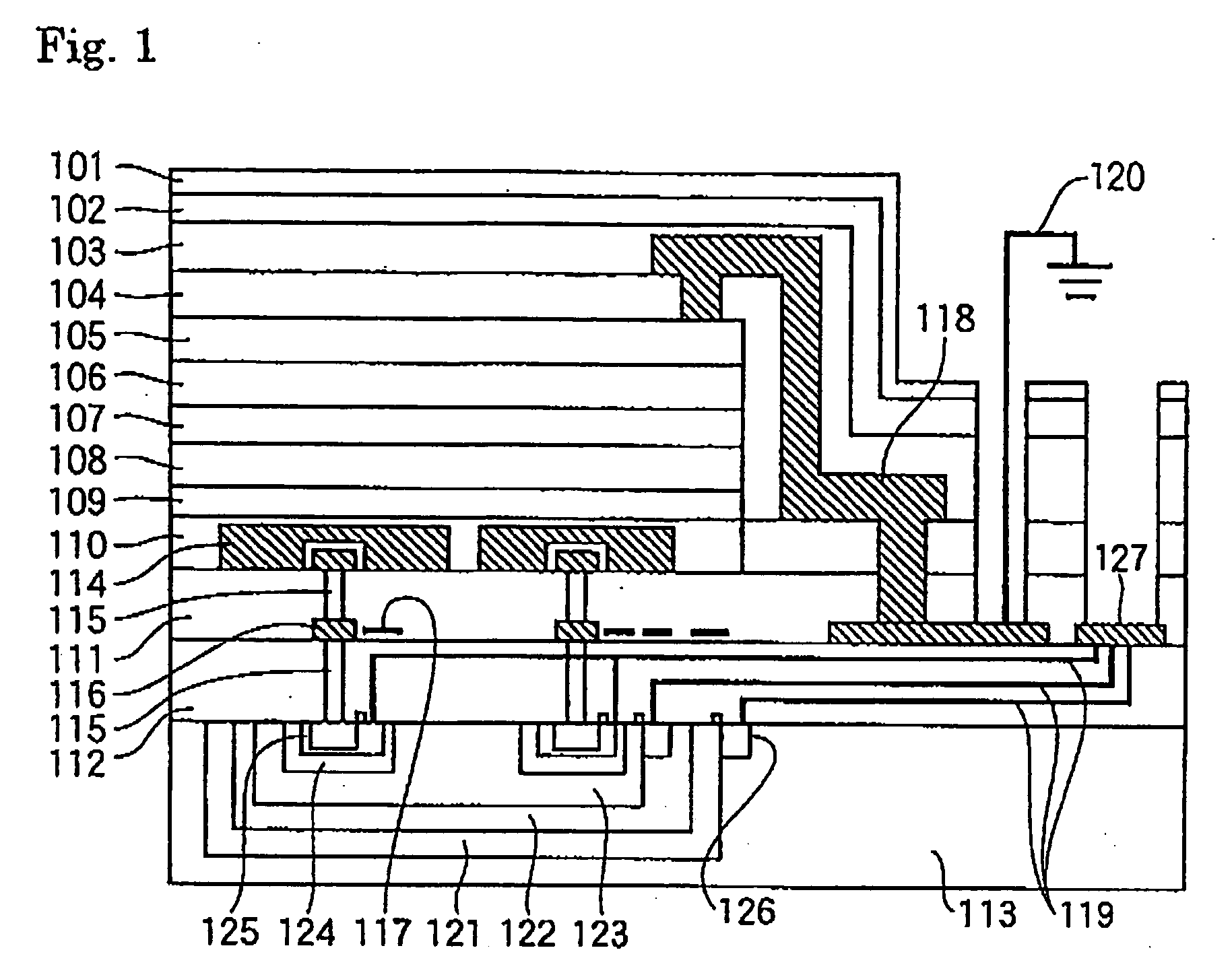Photoelectric conversion element and method for producing photoelectric conversion element
a technology of photoelectric conversion element and conversion element, which is applied in the direction of diodes, semiconductor devices, electrical apparatus, etc., can solve the problems of high transmittance and low resistance, high material and forming method restrictions, and achieve the effect of convenient fabrication reducing noise, and increasing the sensitivity of photoelectric conversion elements
- Summary
- Abstract
- Description
- Claims
- Application Information
AI Technical Summary
Benefits of technology
Problems solved by technology
Method used
Image
Examples
example 1
[0122] In the preferable photoelectric conversion element structure as discussed above, an MgAg layer of 10 nm in thickness was formed as a buffer layer 106. A pixel transparent electrode 114 was formed by using ITO and its layer thickness was 50 nm. The sheet resistance of the pixel transparent electrode 114 was 200Ω / □. In the case of the invention, a transparent electrode 105 was formed by the rf sputtering method (TS distance: 10 cm) wherein the O2 inlet amount corresponded to 4% of the total gas inlet amount and the layer-forming temperature was 25° C. In Comparative Example, on the other hand, a transparent electrode 105 was formed by introducing 0.5% of O2 based on the total gas inlet amount and the layer-forming temperature was 25° C. As substitutes for the organic layers 107 to 110 in the preferred photoelectric conversion element, a tris-8-hydroxyquinoline aluminum (Alq) layer (50 nm) and a 2,9-dimethylquinacridone layer were formed from the substrate side by the heat depos...
example 2
[0125] In the preferable photoelectric conversion element structure as described above, a transparent electrode 105 was formed by the rf sputtering method (TS distance: 10 cm) wherein the O2 inlet amount corresponded to 0% of the total gas inlet amount and the layer-forming temperature was 25° C. to give a layer 10 nm in thickness. In Comparative Example, on the other hand, a transparent electrode 105 was formed by introducing 0.5% of O2 and the layer-forming temperature was 25° C. to give a layer of 100 nm in thickness. As substitutes for the organic layers 106 to 110 in the preferred photoelectric conversion element, a tris-8-hydroxyquinoline aluminum (Alq) layer (50 nm) and a 2,9-dimethylquinacridone layer (100 nm) were formed from the substrate side by the heat deposition method.
[0126] As the results of the measurement of sheet resistances and transmittances of the transparent electrodes thus obtained, the sheet resistance of the invention sample was 1500Ω / □ while that of the c...
PUM
 Login to View More
Login to View More Abstract
Description
Claims
Application Information
 Login to View More
Login to View More - R&D
- Intellectual Property
- Life Sciences
- Materials
- Tech Scout
- Unparalleled Data Quality
- Higher Quality Content
- 60% Fewer Hallucinations
Browse by: Latest US Patents, China's latest patents, Technical Efficacy Thesaurus, Application Domain, Technology Topic, Popular Technical Reports.
© 2025 PatSnap. All rights reserved.Legal|Privacy policy|Modern Slavery Act Transparency Statement|Sitemap|About US| Contact US: help@patsnap.com


